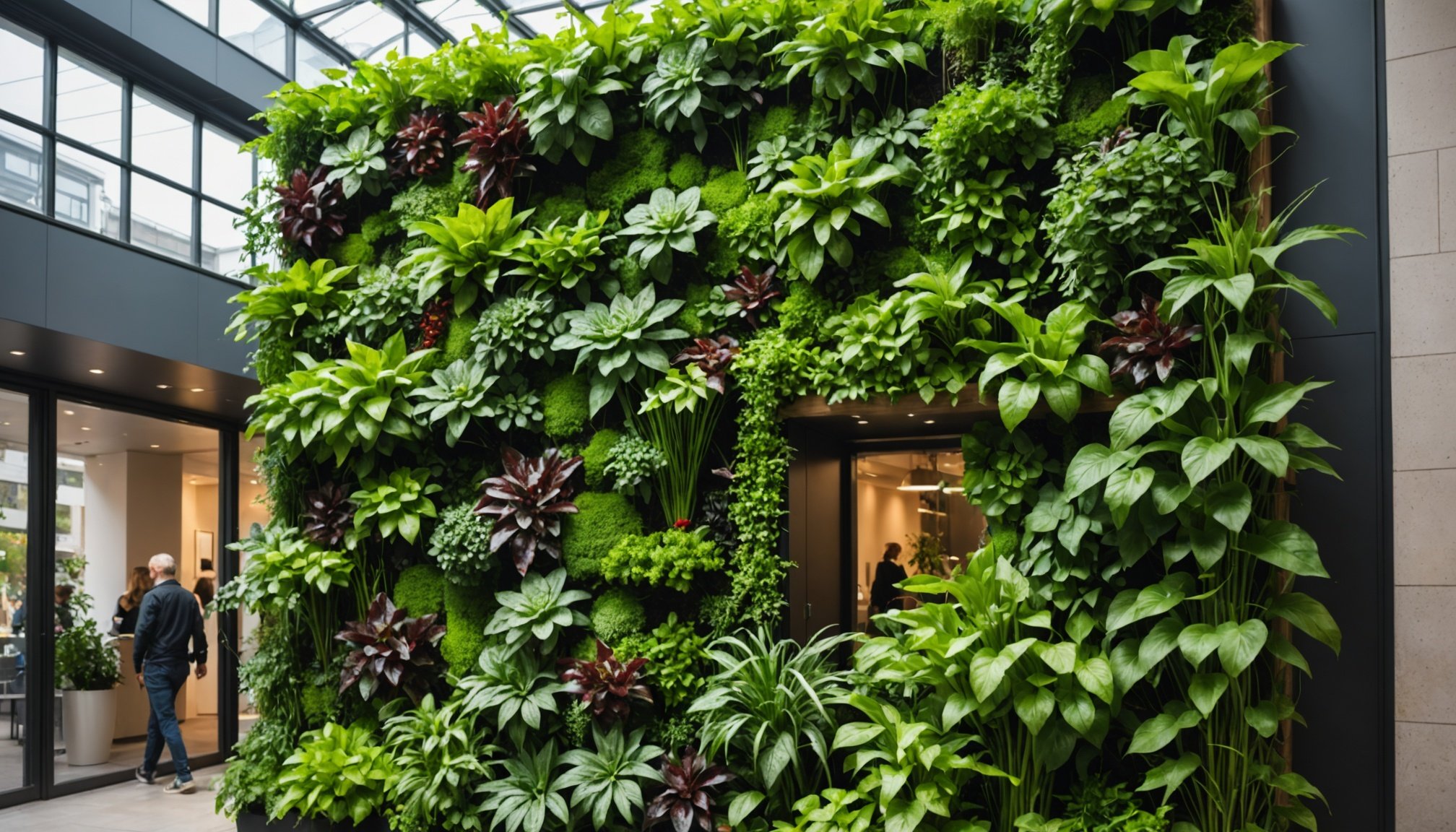The Benefits of Indoor Vertical Gardens
Indoor vertical gardens are revolutionising urban gardening by enhancing air quality and promoting healthier environments. These gardens act as natural air purifiers, filtering pollutants and increasing oxygen levels indoors. In dense urban settings, where greenery is scarce, vertical gardening offers a compact solution to improve air quality. Studies indicate plants such as ferns and spider plants are particularly effective in removing airborne toxins like formaldehyde and benzene. The presence of these plants in indoor spaces contributes to cleaner, fresher air.
Vertical gardens not only address air purification but also play a crucial role in fostering healthier urban environments. They moderate humidity and temperature levels indoors, creating more comfortable living spaces. This natural regulation can lead to improved indoor climates, reducing the need for artificial ventilation systems.
Also read : Revolutionizing emergency medical services: the promises and pitfalls of autonomous vehicles
The benefits of incorporating greenery into cities extend beyond individual spaces. Statistical evidence shows that urban areas with increased plant coverage experience lower pollution levels and enhanced public health outcomes. A greener city contributes to the well-being of its residents, from improved air quality to a higher quality of life.
In summary, indoor vertical gardens are a practical and aesthetically pleasing solution for urban inhabitants seeking healthier indoor environments, improving air quality, and supporting the broader objective of urban sustainability.
Also read : Finding harmony: how digital detox retreats enhance stress relief and supercharge productivity
Air Quality Enhancements through Vertical Gardens
Indoor vertical gardens play a significant role in refining air quality within urban environments. These gardens filter pollutants through natural processes, involving plants like ferns and spider plants, which excel in removing toxins such as formaldehyde.
Mechanisms of Air Purification
Plants engage in a process called stomatal uptake, where they absorb harmful airborne chemicals through small openings on their leaves. In addition to stomatal uptake, the microorganisms present in soil also contribute to breaking down airborne toxins, complementing the efforts of plants. This two-pronged approach greatly enhances the indoor environment.
Role of Specific Plant Species
Research confirms that certain indoor plants are particularly effective at purifying air. Spider plants, also known as Chlorophytum comosum, have been highlighted for their proficiency in cleansing airborne pollutants. Snake plants and peace lilies also exhibit high efficacy in reducing common indoor toxins, making them ideal choices for indoor vertical garden implementations.
Research Studies on Air Quality Improvement
Studies demonstrate the potential of such gardens to improve air quality significantly in urban settings. Data collected from various installations show a marked decrease in pollution levels, affirming that integrating these natural systems into indoor spaces results in meaningful air quality enhancements.
Mental Health Benefits of Urban Greenery
Introducing green spaces within urban settings can significantly bolster mental health. Numerous studies illustrate how exposure to plants and greenery plays a crucial role in reducing stress levels. The presence of plants in indoor and outdoor environments is linked to a drop in cortisol, the hormone responsible for stress. This natural stress reduction can lead to improved overall well-being.
Connection Between Green Spaces and Stress Reduction
Integrating green elements like indoor vertical gardens into urban homes creates a calming atmosphere. These gardens not only serve aesthetic purposes but also act as therapeutic tools. As individuals engage with their gardens, anxiety and tension often subside. Moreover, caring for plants fosters mindfulness, which is instrumental in mitigating stress.
Psychological Benefits of Plants
Vertical gardens can significantly elevate mood and boost positive emotions. Interactions with plants have been associated with enhanced feelings of happiness and satisfaction. Moreover, their presence in living spaces offers a sense of tranquillity and stimulation, contributing to a balanced mental state.
Studies advocate that exposure to nature, even in urban constructs, enhances cognitive functions and concentration abilities, ultimately enriching mental health. Integrating these gardens isn’t just a trend but a beneficial lifestyle enhancement, aligning urban life with nature.
Practical Implementation Tips for Indoor Vertical Gardens
Creating a successful indoor vertical garden involves thoughtful planning and careful execution. Start by choosing the right location and lighting. Select spots with sufficient natural light, such as near windows with south or east exposure. When natural light is limited, consider using grow lights to ensure your plants thrive.
Choosing the Right Location and Lighting
The positioning of your vertical garden significantly affects its health. Consider areas in your home where the plants can get ample light, such as balconies or sunny walls. If natural light isn’t a possibility, LED grow lights can replicate the needed light spectrum. They are energy-efficient and effective.
Essential Materials and Tools
Setting up requires a few essential materials: a sturdy frame or trellis, suitable containers, and quality potting mix. For a seamless setup, include a drip irrigation kit to maintain moisture consistently. Essential tools, such as pruning shears and a trowel, will aid in regular care.
Maintenance Best Practices
Consistent maintenance is crucial for the longevity of your vertical garden. Regularly check for signs of pests or disease. Pruning and watering should be tailored to the plant species, as needs can vary. Adequate care ensures a thriving green space, enhancing your indoor environment.
Case Studies of Successful Urban Vertical Gardens
In recent years, urban projects embracing indoor vertical gardens have shown how transformative these green structures can be. Notable examples in cities like Singapore and Paris highlight their positive impact on air quality and overall community well-being. These gardens facilitate urban beautification while significantly enhancing air quality levels and providing urban gardening benefits through natural filtration of pollutants.
Urban Projects and Community Impact
Cities have implemented vertical gardens as part of their larger city planning initiatives. For instance, Singapore’s urban landscapes have integrated vertical greenery extensively, resulting in cleaner air and a more aesthetically pleasing environment. Similarly, Paris has initiated urban projects where vertical gardens are employed to combat pollution and improve residents’ quality of life. These projects serve as successful models demonstrating the utility of vertical gardens in dense urban settings.
Overcoming Challenges and Solutions
These urban vertical garden examples often face challenges like financial constraints and the complexity of integrating greenery into existing structures. However, by using innovative solutions like modular systems and public-private partnerships, cities have effectively navigated these obstacles. These strategic implementations have set positive precedents for other urban areas considering similar initiatives.

